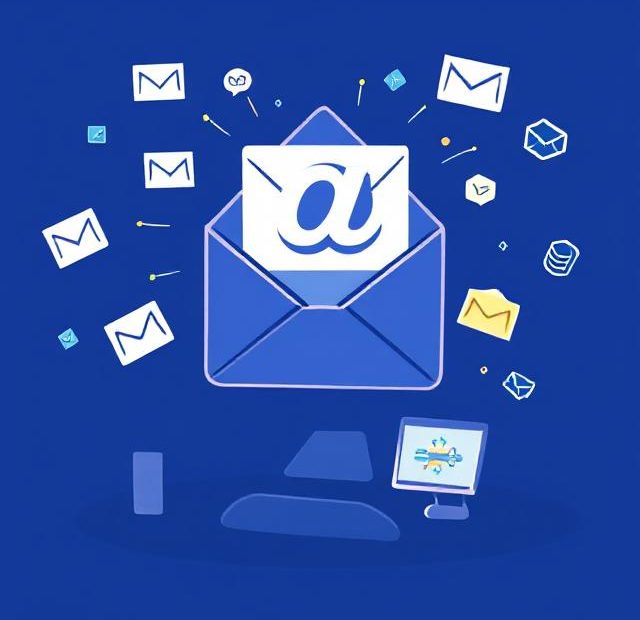When you hit “send” on your marketing email, you expect it to land in your subscriber’s inbox. But in reality, not all emails get there. Some bounce. Some get filtered into spam. That’s where email deliverability comes in—a key metric that can make or break your email marketing success.
In this guide, we’ll explore what email deliverability is, why it matters, and proven strategies to improve it. Whether you’re running newsletters, promotional emails, or transactional messages, understanding and optimizing deliverability ensures your message is seen, not ignored.
What Is Email Deliverability?
Email deliverability refers to the ability of your email to land successfully in a recipient’s inbox—not the spam folder or promotions tab. It’s different from delivery rate, which simply tracks whether the email was accepted by the receiving server. Deliverability digs deeper and asks, “Did it reach the inbox?”
Key metrics related to email deliverability include:
-
Inbox placement rate
-
Bounce rate
-
Spam complaint rate
-
Open and click-through rates
High deliverability means your emails consistently reach the inbox. Low deliverability? You risk being blocked, flagged as spam, or ignored altogether.
Why Email Deliverability Matters
Your email campaigns can have perfect design, great copy, and irresistible offers—but if they don’t land in the inbox, none of that matters. Poor deliverability leads to:
-
Wasted marketing budget
-
Lost sales and engagement opportunities
-
Damaged sender reputation
Improving your email deliverability not only boosts ROI, but it also protects your domain from being blacklisted or flagged by ISPs (Internet Service Providers).
Factors That Affect Email Deliverability
Several elements influence whether your email makes it to the inbox:
1. Sender Reputation
This is like a credit score for your domain or IP. It’s built over time based on your email behavior, including:
-
Bounce rates
-
Spam complaints
-
Sending volume consistency
-
Engagement rates
A bad sender reputation lowers your chances of inbox placement.
2. Authentication Protocols
Implementing SPF, DKIM, and DMARC proves that your emails are legit and not forged. Without these, your emails are more likely to be flagged as suspicious.
3. List Quality
Buying email lists or using old, unverified data can spike your bounce rate and hurt your credibility. Permission-based, active subscribers are key to high deliverability.
4. Content and Formatting
Spammy subject lines, excessive images, broken links, or large attachments can trigger spam filters. Even your tone, keywords, and HTML structure matter.
5. Engagement Metrics
ISPs track how recipients interact with your emails. High open rates, clicks, and replies signal relevance. High delete or complaint rates? That’s a red flag.
How to Improve Email Deliverability
Improving email deliverability requires both technical setup and strategic execution. Let’s break it down.
✅ 1. Authenticate Your Emails
Set up these three key DNS records for your domain:
-
SPF (Sender Policy Framework): Lists authorized mail servers
-
DKIM (DomainKeys Identified Mail): Adds a digital signature
-
DMARC (Domain-based Message Authentication): Aligns and enforces policies
These help mail providers verify you’re a trustworthy sender and protect against spoofing.
✅ 2. Clean Your Email List Regularly
Inactive or invalid email addresses increase bounce rates and damage reputation. Maintain a clean list by:
-
Using double opt-in during sign-up
-
Removing hard bounces and inactive subscribers
-
Re-engaging or purging unengaged users
Aim for quality over quantity—a smaller, engaged list is better than a large, unresponsive one.
✅ 3. Use a Reputable Email Service Provider (ESP)
Platforms like Mailchimp, ConvertKit, Brevo, or ActiveCampaign maintain strong IP reputations and offer built-in deliverability tools. They also handle bounce management and unsubscribe processing automatically.
✅ 4. Avoid Spam Trigger Words and Tactics
Words like “FREE!!!”, “Cash Bonus”, or “Act Now!” can cause filters to flag your message. Also avoid:
-
All caps and multiple exclamation marks
-
Image-only emails
-
Misleading subject lines
-
Missing unsubscribe links
Use natural, helpful language that reflects real value to the reader.
✅ 5. Segment and Personalize Your Emails
Sending the same message to your entire list doesn’t work anymore. Segment by:
-
Behavior (opens, clicks)
-
Purchase history
-
Preferences and demographics
Personalized emails not only perform better but also signal relevance to ISPs, improving deliverability over time.
✅ 6. Monitor Your Metrics and Feedback Loops
Keep an eye on:
-
Bounce rate (should be <2%)
-
Spam complaint rate (should be <0.1%)
-
Open rate (healthy is ~20%+ depending on industry)
-
Click-through rate
Use tools like Google Postmaster Tools, Sender Score, or your ESP’s analytics to track performance.
✅ 7. Warm Up New Domains and IPs
Don’t blast your entire list from a new domain or IP right away. Start small and gradually increase volume to build trust with mailbox providers. This is called IP warm-up and it’s essential for new senders.
Final Thoughts
Mastering email deliverability is one of the most important steps in ensuring your email marketing actually works. With the right mix of authentication, clean data, smart content, and consistent sender behavior, you can land in the inbox—where your message belongs.
Remember: It’s not just about sending more emails. It’s about sending better emails to the right people, at the right time, with the right structure. Follow these practices, and watch your open rates, clicks, and conversions grow.
Also, you can learn more about Email Authentication here.
